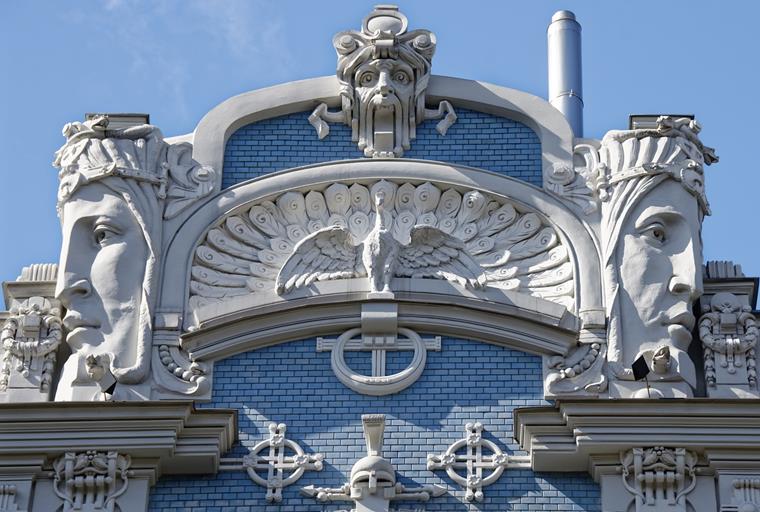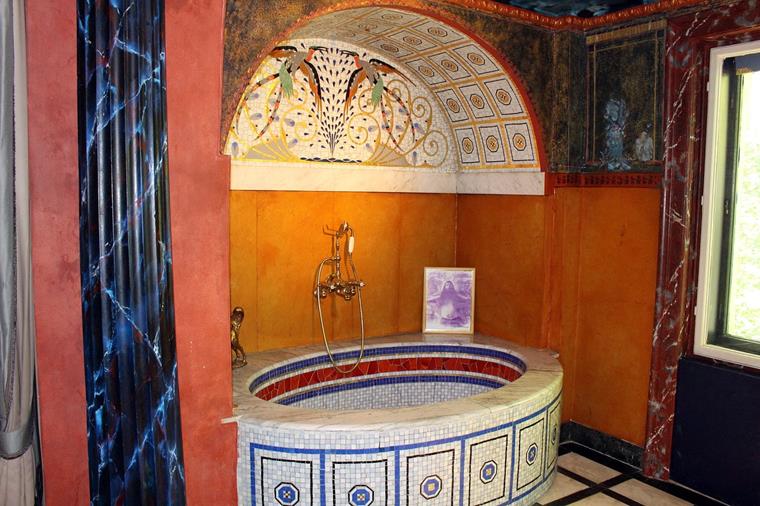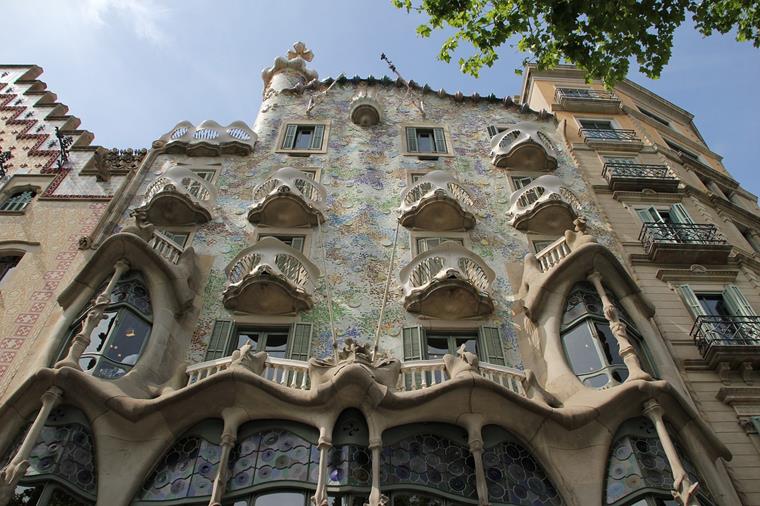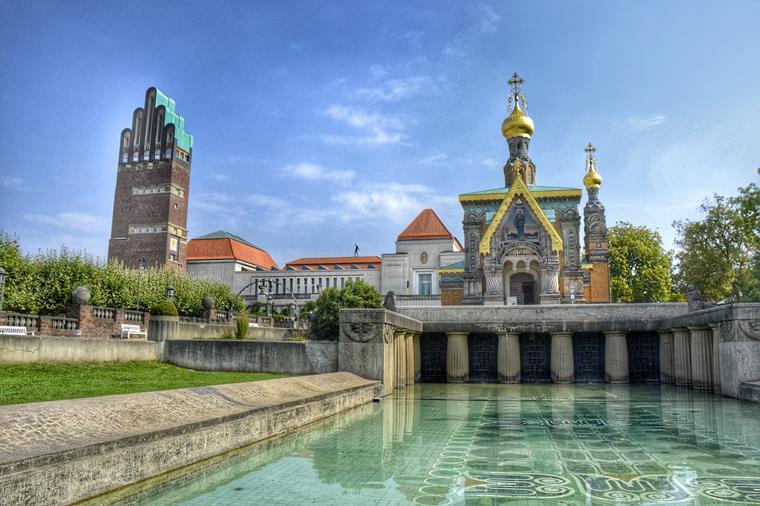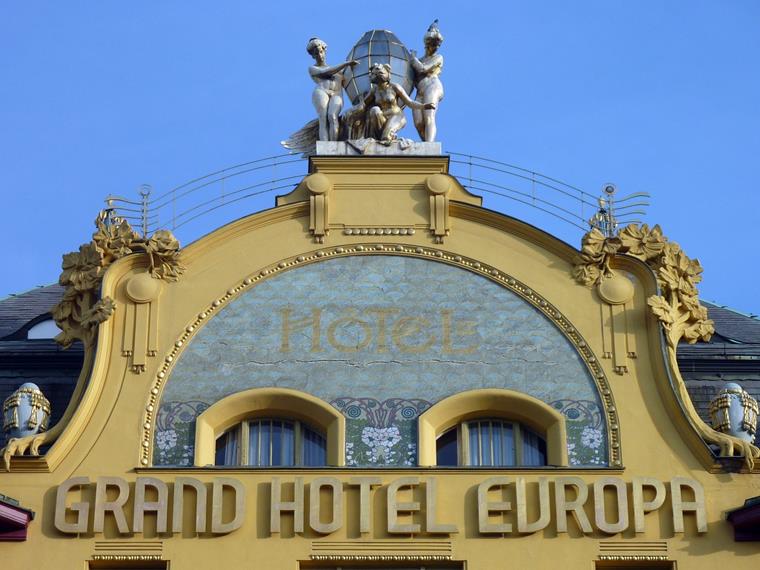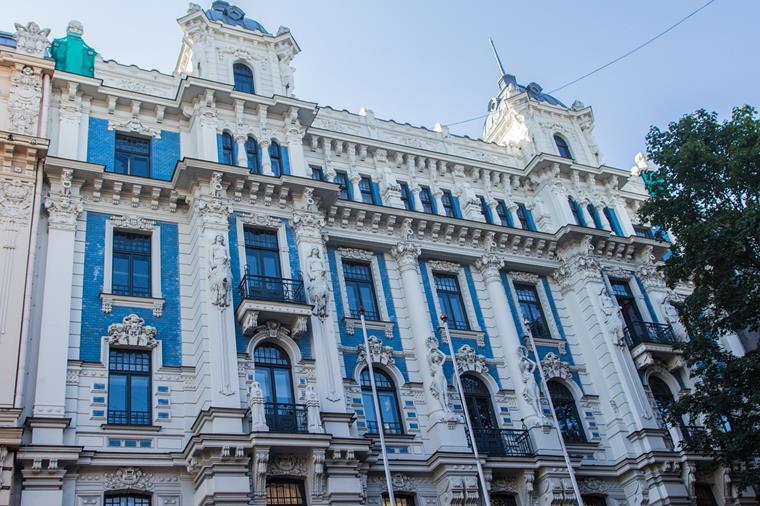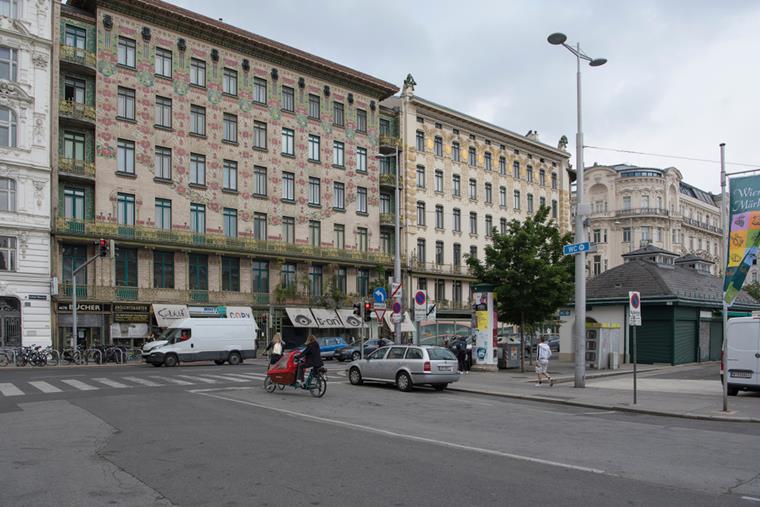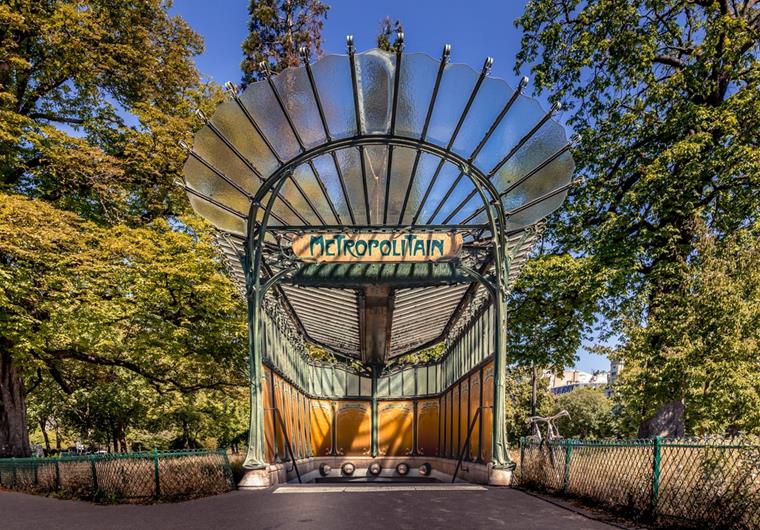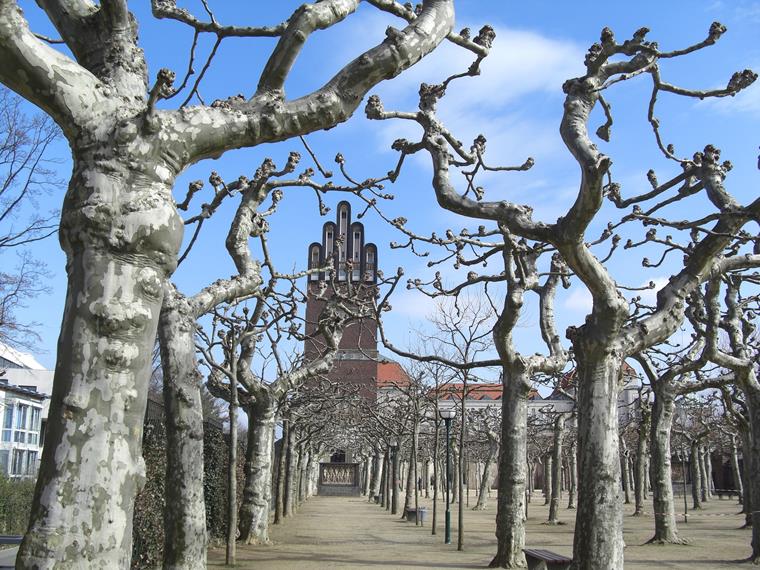From around 1890 until the beginning of World War I in 1914, a new period of art and architecture existed that deliberately set itself apart from everything else. Internationally, the French term "Art Nouveau" for this very special stylistic period has prevailed.
In England, the term "Modern Style" was created, and in Germany, this movement was called "Jugendstil". This goes back to the Munich art and literature magazine "Jugend", which dealt mainly with this art and architecture style.
Although the period seems quite short, little more than 20 years, it has left a lasting impression on our architecture and construction methods. So let's take a closer look at how and, more importantly, why such a colorful and diverse trend was able to take hold in the construction industry. Let's go on a journey to the end of the 19th century.
Origin of Art Nouveau
Narrow alleys, gray walls, and smoky streets in the shadow of huge factory buildings: industrialization in Europe gradually reached its peak at the turn of the century. In addition to numerous technical innovations, it also brought great social problems. The emerging factories drew people from the countryside to the city, and there was a lack of housing in agrarian Germany. While in the middle of the 19th century, about 60% of the population lived in the country, this value shifted towards the cities at the turn of the century.
At the same time, as a result of the founding of the German Confederation (Gründerzeit architecture), Historicism swept euphorically through the affluent districts of the cities and quickly became a thorn in the side of many. Fewer and fewer people could afford such living space. In Berlin, for example, about one in ten people lived in the cheapest possible basement apartment and in general, only every second Berlin apartment had a heatable room in the first place.
For this reason, architects and building owners had turned away from the previous Historicist construction methods. There were cheaper, simpler buildings, which should also have been affordable for simple workers. These structures often did not look pretty. Art Nouveau developed in response to this dilemma.
The gray, heavy industry and its often unadorned factories had to be countered with something: the new buildings had to be affordable, but presentable. According to the motto "form follows function", a building should not be overloaded, but aesthetically pleasing. Even from the outside, it should be apparent at first glance what purpose it serves.
Features of Art Nouveau
Thus, artists and architects together began to be inspired by nature to combine art and architecture. They created functional buildings with organic shapes, and decorated the facades and interiors with floral patterns and curved lines: a feeling of refinement and lightness compared to the pompous Historicism and the massive, undecorated factory buildings.
At first glance, typical Art Nouveau buildings show an unmistakable passion for the beautiful, the organic, and the ornamental. Here, any imitation of historical styles was deliberately broken. Motifs from nature often adorn colorfully designed exterior walls and interior decoration: Everything had to be in this new style, from the sofa cushions to the facade design.
Elaborate mosaics meet floral patterns. Vines that wind along the roof gable or balcony and naturally depicted sculptures of women with fair complexions and wreaths of flowers decorate impressive buildings that immediately catch the eye. These decorations were often made of iron, glass, and ceramics in order to emphasize the natural lightness.
Examples of Art Nouveau Architecture
Casa Batlló
Barcelona (Spain)
This house is considered a masterpiece of the famous architect Antoni Gaudí and a prime example of the Art Nouveau movement. The organic shapes and the use of mosaics and ceramics in the facade immediately draw attention to themselves. Located at number 43 on Paseo de Gracia, the colorful building is well-known by locals and visitors.
As in all European cities, Barcelona also had to contend with an increasing population. Therefore, a new urban planning scheme, the Plan Cerdà, was created in 1860. Influential families moved their residences to the Paseo de Gracia area, which would now serve as the hub of the city.
Originally built in 1877, the building was to be rebuilt upon a change in ownership in 1903. The new owner, D. Josép Batlló, granted the responsible architect, Antoni Gaudí, a free hand in the design of a planned new building. However, Gaudí did not have the house demolished; instead, he completely redesigned it between 1904 and 1906. The facade retained its elaborate decoration and the partitions were rearranged, so everything looked more open and welcoming.
All these beautiful shapes and colors make the whole of Casa Batlló a true work of art, which, thanks to the well-considered design of the room layout, shows a high functionality in addition to the artistic value.
This architectural masterpiece has been open to the public since 1995 and is a UNESCO World Heritage Site. With around one million visitors every year, Casa Batlló is one of the most popular cultural attractions in Barcelona.
Mathildenhöhe Artists' Colony
Darmstadt (Germany)
Darmstadt is worth a visit, especially a trip to the German center for Art Nouveau art and architecture. Since the early 20th century, visitors have been able to gaze at numerous works of fine and applied art here.
The Mathildenhöhe Darmstadt Institute is visible from a distance. Particularly recommended are the exhibition building including the Wedding Tower (also known as the Five Finger Tower) from 1908, the Artists' Colony Museum from 1901, and the Darmstadt Municipal Art Collection.
This extraordinary complex has been uniting the areas of research, presentation, and mediation of art and culture on an international level since 1900. From 1899 to 1914, numerous artists from all over the world worked here, including Josef Maria Olbrich, who completed the well-known Ernst Ludwig House in 1901. Since 2021, the Mathildenhöhe Artists' Colony has been on the list of UNESCO World Heritage Sites.
Grand Hotel Europa
Prague (Czech Republic)
Anyone traveling through Prague will immediately notice the Hotel Europa, located on Wenceslas Square. The gorgeous Art Nouveau facade stands out from the surrounding buildings. Floral patterns adorn the outer wall and create a dreamy, yet pleasantly clear impression.
Originally, an old stagecoach station gave way to a hotel built in the Neo-Renaissance style on this spot in 1872. In 1903-05, the hotel was combined with two other buildings to form a geometric Art Nouveau complex that still makes a fascinating first impression today. Symmetry, harmonic patterns, and the famous sculpture on the roof make the Hotel Europa a comprehensive work of art in Art Nouveau.
The famous sculpture shows three female figures and an eagle, gathering around a large streetlight. This composition should symbolize Europe. Reopened as a luxury hotel, it became the venue for Kafka's readings, among other things, and enjoyed its heyday until it was nationalized in 1951 and gradually fell into disrepair.
In case you think the facade and interior look familiar: the Hotel Europa was used as a film set, for example, in "Mission Impossible" (1996). After extensive restoration and conversion work, the hotel has been restored to its former glory. Café Europa and the Art Nouveau restaurant "Titanic" are still world-famous.
Riga's Art Nouveau District
Riga (Latvia)
If there is one place in the world Art Nouveau can call home, it is undoubtedly Riga. Riga's Art Nouveau District is home to one of the largest concentrations of Art Nouveau buildings in the world. Eye-catching facades, ornate balconies, and perfectly preserved stuccos are a true declaration of love to Art Nouveau.
With the expansion of the capital of Latvia since the middle of the 20th century, numerous new buildings have been constructed. The Art Nouveau district adjoins the old town directly to the northeast and includes, among other things, the embassy district as well as Elizabetes iela and Alberta iela, where all three Riga architectural styles can be found. That's right: In Riga, three entirely unique forms of Art Nouveau arose.
The “decorative style” is particularly noticeable. Whimsical sphinx sculptures, which visitors to Riga would might not necessary expect, guard facades decorated with demonic creatures and naked, dancing women.
The "Perpendicular Art Nouveau" style is a bit stricter and more straightforward. The contours of women's heads are highlighted by the plasterwork on the facade, while tendrils and other floral designs break up the geometric lines of the building.
However, the attentive visitor will also find here traditional buildings in the "national romantic style". Here you can see typical round and angular bay windows are shown here, as well as the revival of Latvian timber construction. Also, ornaments and patterns from traditional Latvian pop art contribute to the overall concept, combining old and new into a harmonic whole.
Otto Wagner’s Majolikahaus
Vienna (Austria)
Vienna also has a large repertory of Art Nouveau buildings. The majolica house, designed by Otto Wagner, is particularly interesting. It was built in 1898 at Linke Wienlinie 40 and clearly stands out from other buildings with its exterior alone.
The floral ornamentation and the use of ceramic tiles still invite you to daydream as you walk past. These tiles have far more tasks than just looking good: They are weather-resistant, easy to maintain, and washable. Hygiene, i.e. functionality alongside aesthetics, was an important part of Otto Wagner's understanding of the modern way of life.
The colorful floral ornamentation itself originates from the designs of his student, Alois Ludwig. In addition to the facade, the interior is definitely worth seeing, as the staircase alone with its elaborately designed elevator grill is a real eye-catcher.
Porte Dauphine Metro Station
Paris (France)
Paris is world-famous for its iconic metro stations. Anyone who has ridden the metro there must have noticed it immediately: the characteristic rectangular white tiles on the walls. They are especially interesting due to the fact that they were designed in 1900 according to the Nouveau style (Art Nouveau) specifically for the metro stations in Paris.
These "subway tiles" in the same format of 7.5 × 15 cm are still in high demand today; for example, for bathroom or kitchen tiling. However, it is not only the interior of the stations that shows clear signs of Art Nouveau. The entrance gates are also almost iconic.
The metal posts of these gates are very similar to the leaves and blossoms of a tree. This shows the strong connection to nature, which is further enhanced by a glass roof. Unfortunately, there are hardly any such well-preserved gates left in Paris. One of the two is the entrance to the Porte Dauphine metro station, designed by Hector Gimard.
Summary: Art Nouveau Architecture
In summary, Art Nouveau is a very idiosyncratic composition of art and architecture, designed to defy the industrial zeitgeist. The undemanding mass production was contrasted with geometric patterns and natural beauties, creating a perfect harmony of functionality and aesthetics.
To this day, Art Nouveau buildings are eye-catching yet not distracting elements in the architecture of many European cities. Above all, Art Nouveau is a pioneer of Modernism, which will also be discussed in this blog.
What can we learn from Art Nouveau?
The Art Nouveau movement flourished in Europe for just over 20 years, yet it has left deep traces in the construction industry today. Like many architects and designers, we can benefit from the ideas of Art Nouveau in our modern construction industry.
It is precisely this harmony of functionality and aesthetics that ensures that impressive structures are created that appear absolutely timeless. Just as in the industrialization era, we are witnessing the progressive expansion of our cities today.
In order to prevent residential and commercial buildings from being lost in a dreary gray-on-gray, a little affection for nature and attention to detail would help us to create individual, functional buildings. Traditional and modern do not have to be mutually exclusive. Instead, we should merge both into a new entity with the best of both worlds.
Connecting art with the world around us helps the modern construction industry to grow beyond itself. Construction in and of itself is not only a necessity, but also an opportunity to create buildings that will be remembered.
